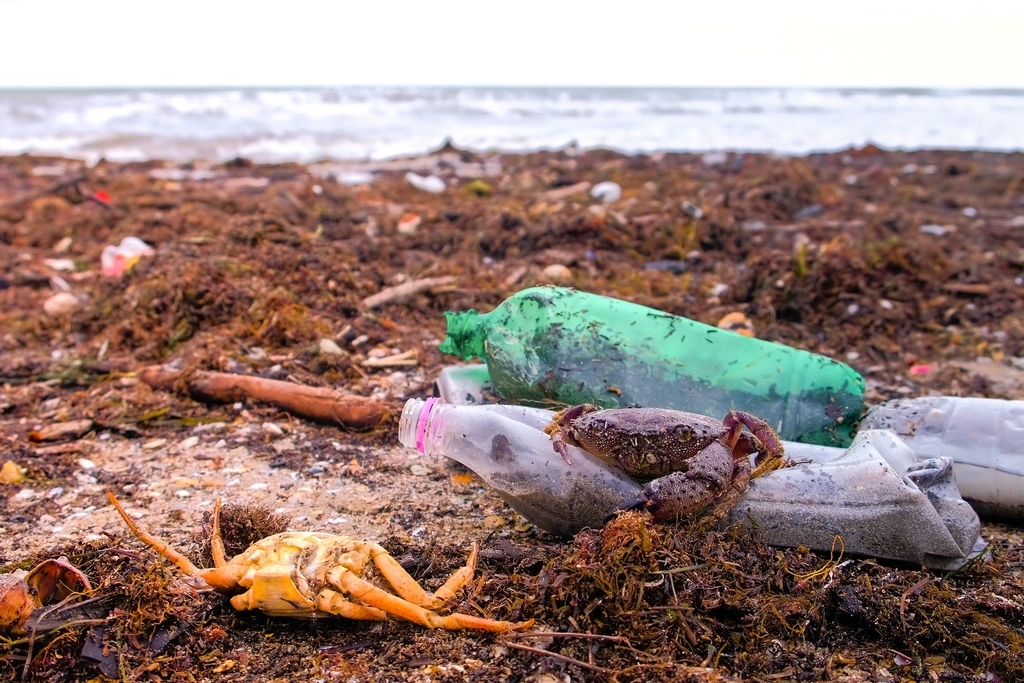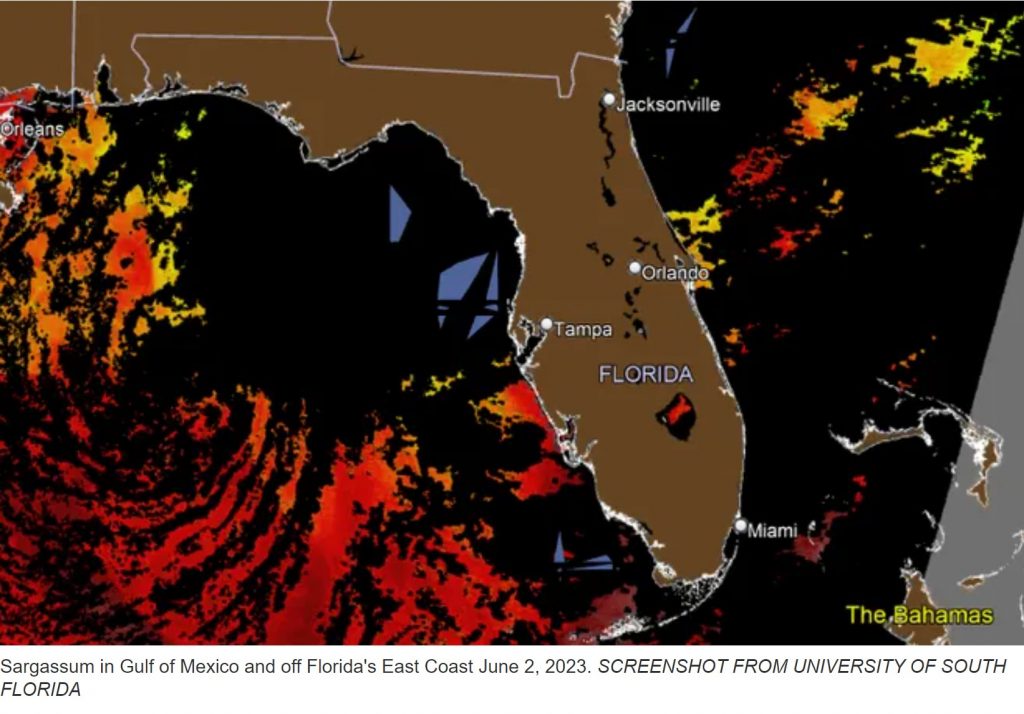Seaweed, Plastics Create Pathogen Storm


While reports of this year’s gigantic seaweed blob have stoked interest for its novel size and odiferous nuisance, a new report defines a relationship between seaweed and microplastic waste that engenders a deadly bacteria, posing a possibly devasting threat to sea life and people.
By Eric Herman
As has been widely reported this past spring and early summer, a massive blob of Sargassum seaweed has invaded Florida and points south creating a smelly mess that has grossed out beachgoers and threatened coastal ecosystems. As unfortunate as that may be, the threat flourishing within the historically gigantic mass may be far worse than first imagined.
A new study from Florida Atlantic University points to a diabolical synergy between Sargassum, plastic marine debris and Vibrio bacteria create what researchers describe as a “perfect pathogen storm that has implications for both marine life and public health.”
Known as flesh-eating bacteria, Vibrio vulnificus, a type of Vibrio, can cause life-threatening foodborne illnesses, primarily from seafood consumption, as well as disease and death occurring when the pathogens enter the body via open wounds when swimming.
Researcher used DNA analysis to study the problematic relationship, sequencing the genomes of 16 Vibrio cultivars isolated from eel larvae, plastic marine debris, Sargassum, and seawater samples collected from the Caribbean and Sargasso seas of the North Atlantic Ocean. What they discovered is Vibrio pathogens have the unique ability to “stick” to microplastics and that these microbes might just be adapting to and taking advantage of the presence of plastic.
PLASTIC COMPONENT
“Plastic is a new element that’s been introduced into marine environments and has only been around for about 50 years,” said Tracy Mincer, Ph.D., corresponding lead author and an assistant professor of biology at Florida Atlantic University’s Harbor Branch Oceanographic Institute. “Our lab work showed that these Vibrio are extremely aggressive and can seek out and stick to plastic within minutes. We also found that there are attachment factors that microbes use to stick to plastics, and it is the same kind of mechanism that pathogens use.”
The study, published in the Journal Water Research illustrates that open ocean vibrios represent a previously undescribed group of microbes, some representing potential new species, possessing a blend of pathogenic and low-nutrient acquisition genes, reflecting their pelagic habitat and the substrates and hosts they colonize, the report says. Utilizing metagenome-assembled genome (MAG), this study represents the first Vibrio spp. genome assembled from plastic debris.
Since 2011, Sargassum, which are populations of brown macroalga, have been rapidly expanding in the Sargasso Sea and other parts of the open ocean known as the Great Atlantic Sargassum Belt, causing frequent, unprecedented seaweed deposits on beaches. Plastic marine debris, first found in surface waters of the Sargasso Sea, has become a worldwide concern, and is known to persist decades longer than natural substrates in the marine environment, thus contributing to pathogen development.
Currently, little is known about the ecological relationship of vibrios with Sargassum. Moreover, genomic and metagenomic evidence has been lacking as to whether vibrios colonizing plastic marine debris and Sargassum could potentially infect humans. As the seas of seaweed rolls on, efforts are underway to find innovative solutions to repurpose Sargassum.
ACTUAL RISK?
Findings show some Vibrio have an “omnivorous lifestyle” targeting both plant and animal hosts in combination with an ability to persist in low-nutrient conditions. “With increased human-Sargassum-plastic marine debris interactions, associated microbial flora of these substrates could harbor potent opportunistic pathogens. Importantly, some cultivation-based data show beached Sargassum appear to harbor high amounts of Vibrio bacteria,” the report states.
“I don’t think at this point, anyone has really considered these microbes and their capability to cause infections,” said Mincer. “We really want to make the public aware of these associated risks. In particular, caution should be exercised regarding the harvest and processing of Sargassum biomass until the risks are explored more thoroughly.”
The seaweed blog news is, however, not all bad. The quantity of seaweed has decreased 15% between April and May, according to researchers monitoring sargassum’s growth and movement.
Unfortunately, for Florida residents and visitors, the reductions in seaweed mass happened in the eastern Atlantic Ocean, while sargassum quantities increased in the western Atlantic and the Gulf.
The causes and implications of the unexpected size reduction remain unknown.
Reference: https://www.fau.edu/newsdesk/articles/perfect-pathogen-storm.php
Photo by Vadim Zakharishchev | Shutterstock










